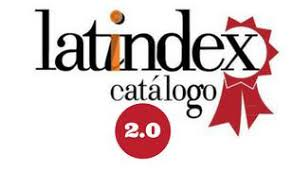El rol de los actores sociales y sus implicancias en la configuración territorial de Moquehue, Neuquén, Argentina
Keywords:
social actors, uses, environment, dynamics, territoryAbstract
Moquehue is a small mountain settlement located in Aluminé department, Neuquén, Argentina. It aroses in the 40's, as a product of the development of cattle raising and forestation. Since these activities began, the permanent settlement and first commercial activities appeared, in order to cover the new demands. Nature has given the region a beautiful landscape that acquires value since the 70's, when the population of nearby localities began to usufruct tourism in the region. Even though the lands belong to the Provincial State, since 1984 they are under the control of the Pulmarí Interstate Corporation (PIC), which regulates their use.
In 1980, tourism was stimulated by state politics that lead to the growth and expansion of Villa Pehuenia and Moquehue, defining a new territorial configuration, in which different social actors have an active role. In the last decade, this dynamism was accentuated in Moquehue, a zone without regulation of the occupation and in an area with limited provision of services. The objective of this paper was the analysis of territorial transformations promoted by social actors that established the current uses of the land and its environmental consequences, considering the role of municipal and provincial government in these transformations.
Research includes compilation of information, interviews and field survey of new occupations. This information was digitized. Four relevant social actors are recognized in the development and growth of Moquehue, linked especially to tourism activity: the municipality, that defines parcels for permanent residential use and services; private actors, that increase accommodation supply; historical local people who subdivide and sell land irregularly, and new actors who settle in the area with permanent residence, linked to other activities that made them choose this place because of its environmental values. As a result, zones with different types of transformation are identified, in which these actors have a decisive role giving different characteristics and dynamics to each one.
It can be concluded that the development of tourism in this region has promoted the expansion of Villa Pehuenia-Moquehue, however it has not been accompanied by management and ordering politics aimed in order to preserve the environment. Overlapping jurisdictions and land tenure have placed difficulties in control and regulation of urban growth and land use. This is also evidenced by the lack of infrastructure and provision of basic services in order to improve the life quality of the population, and respond to sustained growth and tourism demands.
Downloads
References
Cappelletti, V., Pérez, G., Torrens, C., Jurio, E. (2016). El desarrollo de la actividad turística y sus implicancias en el territorio. Ejido de Villa Pehuenia, provincia del Neuquén. Geografías por venir. Ed. EDUCO - Universidad Nacional del Comahue Neuquén.
Capua, O., Jurio, E., Torrens, C., Cappelletti, V., Membribe, A. (2010). Transformaciones territoriales y superposición jurisdiccional: desafíos para la gestión en Villa Pehuenia, Provincia del Neuquén, Argentina. II Congreso Internacional de Desarrollo Local. I Jornadas Nacionales en Ciencias Sociales y Desarrollo Rural. Publicado en CD. Universidad Nacional de La Matanza, San Justo, Buenos Aires.
Dimitriu, A. M. (2002). Producir y consumir lugares: Reflexiones sobre la Patagonia como mercancía.Revista de Economía Política de las Tecnologías de la Información y Comunicación. Vol. IV. N°3. En: www.eptic.com.brhttp://www.eptic.com.br/
Haesbert, R. (2005). Desterritorialização, Multiterritorialidade e Regionalização. Unbral Fronteiras. Ministério da Integração Nacional, Sec. de Políticas de Desenvolvimento Regional (SDR). Brasilia. http://unbral.nuvem.ufrgs.br/base/items/show/2801
Morello, J., Matteucci, S., Rodríguez, A., Silva, M., y Haro, J.(2002). Ed. Orientación Gráfica. Buenos Aires.
Pirez, P. (1995). Actores sociales y gestión de la ciudad. Revista Ciudades N°28, RNIU, México.
Radonich, M., Steimbreger N., Kreiter, A. (2003). Tramas sociales y organización de la fruticultura en áreas de expansión. Grupo de Estudios Sociales Agrarios -GESA- Universidad Nacional del Comahue. Neuquén
Steimbreger, N. y Torrens, C. (2013). Transformaciones territoriales y dinámicas ocupacionales en áreas rurales del norte de la Patagonia. Revista Huellas, N° 17,.163-186.. http://www.biblioteca.unlpam.edu.ar/pubpdf/huellas/v17a00primerpag.pdf
Published
How to Cite
Issue
Section
License
Copyright (c) 2017 Boletin GeográficoTransfer of rights and data processing
The acceptance of an article for publication in the Journal Geographic Bulletin implies the cession of the rights of printing and reproduction, by any means and means, of the author in favor of the Department of Geography of the National University of Comahue, which will not reject any request reasonable for the authors to obtain permission to reproduce their contributions. The total or partial reproduction of the works published in the Geographic Bulletin must be done citing the origin, otherwise, the copyright is violated.
Likewise, it is understood that the concepts and opinions expressed in each work are the sole responsibility of the author, without being responsible or in solidarity, necessarily, neither the editorial staff nor the editorial staff.
It is the responsibility of the authors to be able to provide interested readers with copies of the raw data, procedure manuals, scores and, in general, relevant experimental material.
Likewise, the Management of the journal guarantees the appropriate treatment of personal data
COPYRIGHT TRANSFER FORM

















 Journal of the
Journal of the 